Silencing circRNA-ZFAND6 induces trophoblast apoptosis by activating the mitochondrial pathway through the miR-575/SOD2 axis in unexplained recurrent spontaneous abortion
- PMID: 40200350
- PMCID: PMC11977909
- DOI: 10.1186/s12905-025-03682-7
Silencing circRNA-ZFAND6 induces trophoblast apoptosis by activating the mitochondrial pathway through the miR-575/SOD2 axis in unexplained recurrent spontaneous abortion
Abstract
Background: Unexplained recurrent spontaneous abortion (URSA) is a major problem in the field of human reproductive health. At present, several circRNAs have been reported to be differentially expressed and play an important biological function in pregnancy-related diseases. However, the role of circRNAs in URSA remains unclear.
Methods: Levels of circRNA and miRNA were examined by RT-qPCR. The si-RNA and overexpression plasmid were respectively used to silence and overexpress circRNA-ZFAND6. We investigated the biological function of circRNA-ZFAND6 on trophoblasts through CCK8, EdU, Flow cytometric assay, Wound-healing assays and Transwell. Dual luciferase activity assay was conducted to identify the interaction between miR-575 and circRNA-ZFAND6.
Results: We confirmed that circRNA-ZFAND6 was a stable circular RNA and was mostly localized in the cytoplasm. CircRNA-ZFAND6 was downregulated in placental villous tissues of URSA. CCK-8 and EdU assays showed that circRNA-ZFAND6 promoted the proliferation of HTR-8/SVneo cells. Flow cytometry and western blot assays prompted that circRNA-ZFAND6 obviously reduced cells apoptosis. Scratch wound healing and transwell assays revealed that circRNA-ZFAND6 had no effect on cell migration and invasion. CircRNA-ZFAND6 worked by adsorbing miR-575 through the ceRNA mechanism. MiR-575 can inhibit the proliferation and promote the apoptosis of HTR8/SVneo cells. SOD2 was identified as a direct target of miR-575 and was associated with mitochondrial apoptosis. Transmission electron microscopy, TMRM and ROS staining assays both suggested that circRNA-ZFAND6 affected mitochondrial apoptosis. Excessive trophoblast apoptosis was a key event to promote the development of URSA.
Conclusion: CircRNA-ZFAND6, which is low expressed in URSA and regulates the apoptosis of trophoblast cells, may affect the expression of SOD2 and thus affect mitochondrial apoptosis by regulating miR-575. This is closely related to the occurrence of URSA.
Keywords: CircRNA-ZFAND6; Hsa_miR_575; Pregnancy loss; SOD2; URSA.
© 2025. The Author(s).
Conflict of interest statement
Declarations. Ethics approval and consent to participate: The research protocol was approved by the Ethical Committee of Nanjing Maternity and Child Health Care Hospital (No. [2021] NFKSL-076). Written informed consent was collected from all participants before the procedure. Consent for publication: Not applicable. Competing interests: The authors declare no competing interests.
Figures
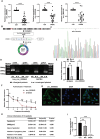
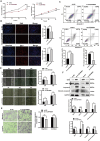
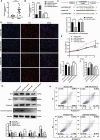
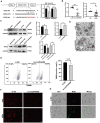
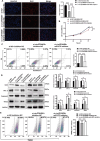

Similar articles
-
Circular RNA hsa_circ_0081343 promotes trophoblast cell migration and invasion and inhibits trophoblast apoptosis by regulating miR-210-5p/DLX3 axis.Reprod Biol Endocrinol. 2021 Aug 9;19(1):123. doi: 10.1186/s12958-021-00795-0. Reprod Biol Endocrinol. 2021. PMID: 34365964 Free PMC article.
-
MicroRNA-200c promotes trophoblast cell dysfunction via inhibition of PI3K/Akt signaling in unexplained recurrent spontaneous abortion.Reprod Biol. 2024 Dec;24(4):100951. doi: 10.1016/j.repbio.2024.100951. Epub 2024 Sep 6. Reprod Biol. 2024. PMID: 39243437
-
Decidual stromal cell-derived exosomes deliver miR-22-5p_R-1 to suppress trophoblast metabolic switching from mitochondrial respiration to glycolysis by targeting PDK4 in unexplained recurrent spontaneous abortion.Placenta. 2024 Aug;153:1-21. doi: 10.1016/j.placenta.2024.05.131. Epub 2024 May 23. Placenta. 2024. PMID: 38810540
-
KLF4 regulates trophoblast function and associates with unexplained recurrent spontaneous abortion.J Transl Med. 2024 Oct 10;22(1):922. doi: 10.1186/s12967-024-05707-5. J Transl Med. 2024. PMID: 39390495 Free PMC article.
-
MiR-135a-5p suppresses trophoblast proliferative, migratory, invasive, and angiogenic activity in the context of unexplained spontaneous abortion.Reprod Biol Endocrinol. 2022 May 24;20(1):82. doi: 10.1186/s12958-022-00952-z. Reprod Biol Endocrinol. 2022. PMID: 35610725 Free PMC article.
Cited by
-
Placental Malaria Induces Oxidative Stress in Human Syncytiotrophoblast.J Infect Dis. 2025 Jul 30;232(1):e174-e185. doi: 10.1093/infdis/jiaf243. J Infect Dis. 2025. PMID: 40366119 Free PMC article.
References
-
- Evaluation. and treatment of recurrent pregnancy loss: a committee opinion. Fertil Steril. 2012 2012;98(5):1103-11. 10.1016/j.fertnstert.2012.06.048 - PubMed
-
- Dimitriadis E, Menkhorst E, Saito S, Kutteh WH, Brosens JJ. Recurrent pregnancy loss. Nat Rev Dis Primers. 2020 2020;6(1):98. 10.1038/s41572-020-00228-z - PubMed
MeSH terms
Substances
Grants and funding
LinkOut - more resources
Full Text Sources
Research Materials

